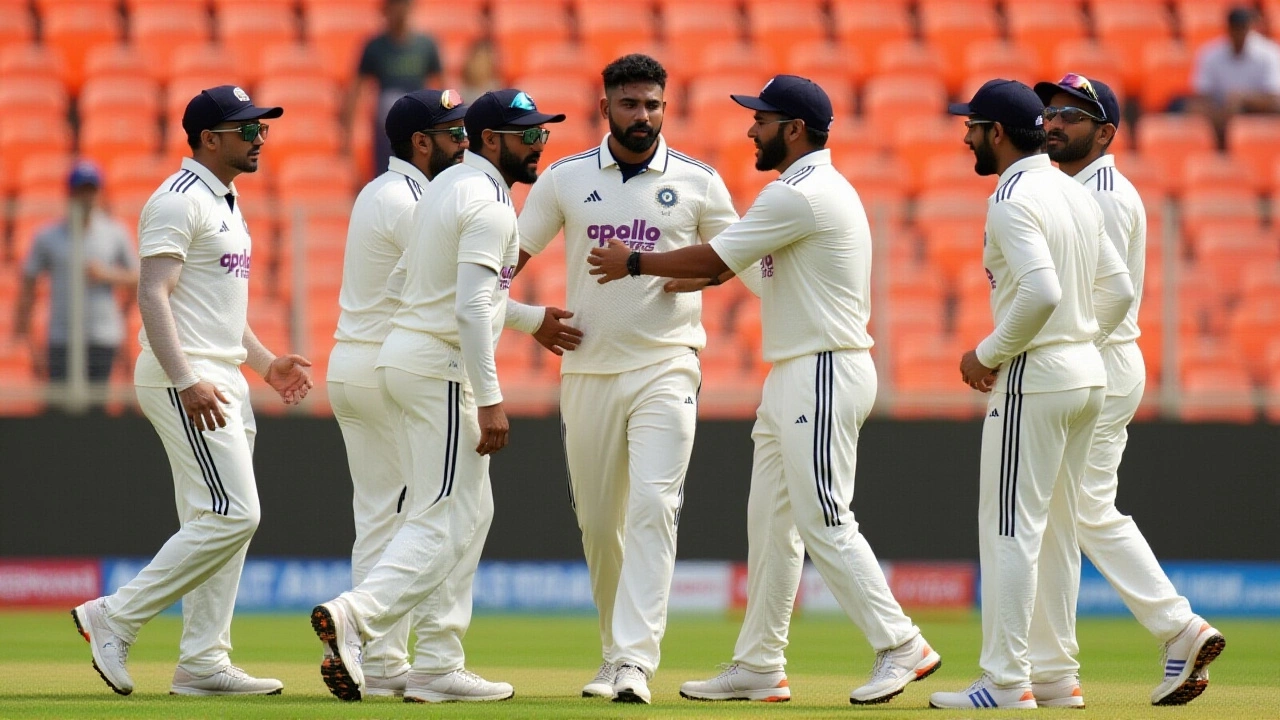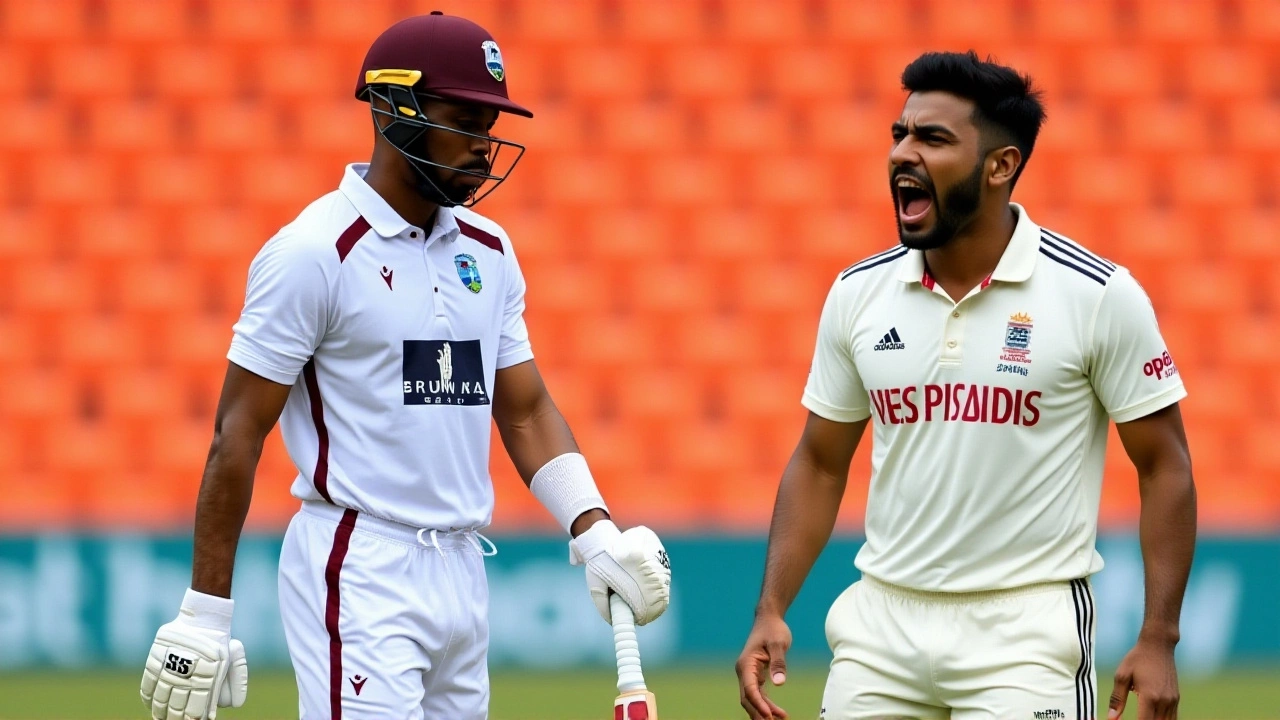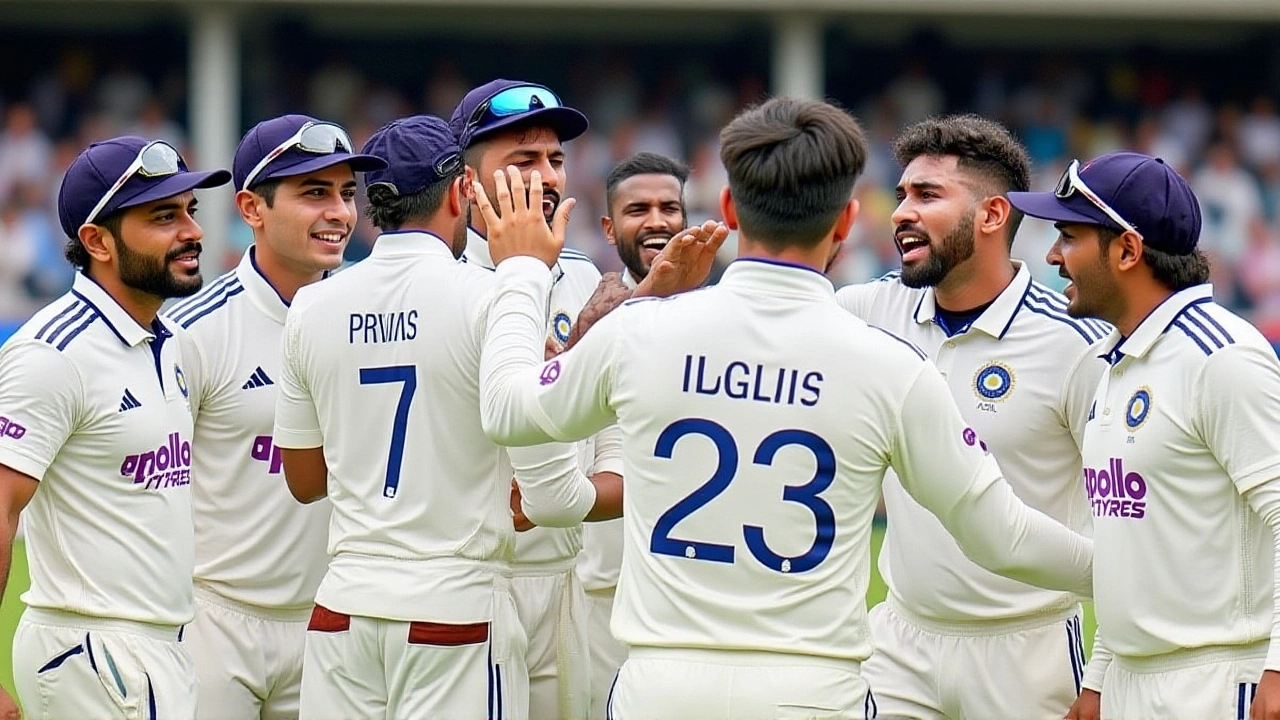When Rohit Sharma, captain of India led his side to an innings and 140‑run romp over the West Indies at the Arun Jaitley Stadium, the ripple effect on the 2025‑27 ICC World Test Championship points table was immediate. The win not only stretched India’s lead in the series but also shoved the Caribbean team to the foot of the standings, leaving them with zero points from four matches. Here’s why that matters for anyone with a stake in Test cricket’s new four‑year saga.
Match recap: India’s dominance in numbers
India posted 560‑3 declared, thanks to a double‑century from Shubman Gill and a solid 96‑run knock from Cheteshwar Pujara. The West Indies were skittled for 220 in the first innings and 200 in the follow‑on, with Jasprit Bumrah claiming 6 wickets for 84 runs across both innings. The margin – an innings and 140 runs – is the fourth‑largest in the championship’s brief history and gave India a full 12 points under the unchanged points system.
How the points table reshaped after the victory
According to the official ICC calculations, Australia still tops the league with a perfect 100 % win‑rate, having amassed 36 points from three clean‑swept series. Sri Lanka sit second on 16 points, while India now holds 40 points from six series – enough to place them third in the official table but first in the ESPN‑cricinfo snapshot that ranks on raw points alone.
- Australia: 36 points, 100 % win % (3 series)
- Sri Lanka: 16 points, 66.67 % win % (2 series)
- India: 40 points, 55.56 % win % (6 series)
- England: 26 points, 43.33 % win % (5 series)
- Bangladesh: 4 points, 16.67 % win % (2 series)
- West Indies: 0 points, 0 % win % (4 series)
The discrepancy between the ICC table and ESPN’s version stems from the league’s reliance on winning‑percentage rather than raw points. In a percentage‑driven race, Australia’s flawless record still outranks India’s larger point haul, even though the Indian side has played twice as many series.
The championship format – a quick refresher
The 2025‑27 edition features 27 series, totaling 71 Test matches. Each of the ten full‑member nations plays six series – three at home, three away – with series lengths ranging from two to five Tests. A win nets 12 points, a draw 4, and a tie 6; a loss yields nothing. Over‑rate penalties subtract one point per missed over. Teams are ranked by the percentage of points earned versus points available, not by the sheer tally.
Should two sides finish with identical percentages, the first tiebreaker is the number of series wins, then away‑match performance, and finally the ICC Test Rankings at the end of the league stage. That hierarchy could become decisive if the top two spots are contested tightly in the final months.

Reactions from the camps
“It was a team effort from start to finish,” Rohit Sharma said in the post‑match press conference. “We wanted to send a message to the rest of the world that India is still the benchmark in Test cricket.”
Conversely, Kieron Pollard, the West Indies’ senior batsman, admitted the defeat was a “humbling reminder that we need to rebuild our Test foundation.” The West Indies Board, represented by Sir Richie Richardson, warned that a series of losses could jeopardize future tour agreements, especially with the ICC’s emphasis on competitive balances.
Meanwhile, Aaron Finch, Australia’s limited‑overs captain, praised his side’s consistency but urged caution: “A perfect record looks great on paper, but the real test is maintaining it over the next two years, especially on overseas soil.”
What this means for the race to Lord’s
The championship will culminate in June 2027 with the final at Lord's Cricket Ground in London – a venue steeped in tradition and the trophy’s ultimate destination. With Australia, India, England and Sri Lanka all within striking distance of the top two spots, the next few series could shuffle the leaderboard dramatically.
India’s next overseas assignment is a four‑Test series against England at Headingley in 2026. A clean sweep would push their winning‑percentage above Australia’s, assuming the Aussies stumble at home. For the West Indies, the immediate priority is avoiding a fifth straight loss, which could trigger a review of their Test status under ICC guidelines.

Historical context: From 2023‑25 to now
The previous 2023‑25 cycle ended dramatically when South Africa beat Australia by five wickets at Lord’s, clinching their first ICC Test trophy since 1998. That finale set a high bar for drama, and the current edition promises even more twists. India’s resurgence after a modest 2023‑25 finish (third place) reflects a strategic shift toward nurturing a deeper seam attack and promoting younger batsmen, a policy championed by head coach Rahul Dravid since 2024.
Meanwhile, the West Indies’ slide to zero points mirrors a longer‑term decline that began after the retirement of their 2000s legends. The ICC has warned that prolonged poor performance could affect funding allocations, making the next series a make‑or‑break affair for Caribbean cricket.
Frequently Asked Questions
How does India's win affect its chances of reaching the final?
The innings victory adds a full 12 points to India's tally, lifting its winning‑percentage to 55.56 %. While Australia still holds a higher percentage, India now sits just one series win behind. A sweep against England next year could push India ahead, making the final at Lord's a realistic prospect.
Why does the ICC use percentage rather than raw points for the table?
Percentage levels the playing field because not all series have the same number of matches. Teams playing longer series can earn more points, so using the ratio of points earned to points available prevents a schedule‑bias and rewards consistent performance across varied series lengths.
What happens if teams finish with identical winning percentages?
The first tiebreaker is the number of series wins. If still equal, the team with the better away‑match record gets the edge. As a last resort, the ICC Test Rankings at the end of the league stage decide the order.
Can the West Indies avoid relegation or funding cuts?
Yes, but they need an immediate turnaround. A win in their next series would break the zero‑point streak and improve their percentage, easing ICC pressure. Continued losses could see the board facing reduced match fees and fewer bilateral series.
When and where will the championship final be played?
The climax is slated for June 2027 at Lord's Cricket Ground in London, a venue that has hosted every WTC final since the competition’s inception.
